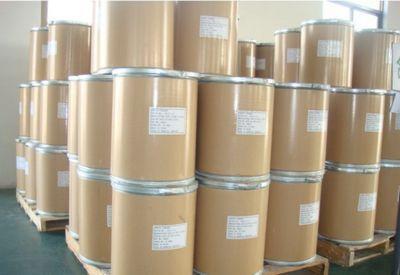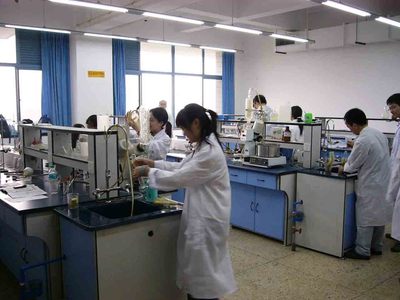|
Palladium chloride Usage And Synthesis |
|
Physical and chemical properties |
Palladium chloride also known as palladium chloride, is a commonly used precious metal catalysts, molecular formula is PaCl2, the appearance is brown-red needle-like crystals or powder, easily deliquescence, the relative density is 4.0 (18 ℃), melting point is 500 ℃ (decomposition), soluble in water, ethanol, acetone and hydrogen bromide. Decomposition in ammonia chloride, potassium iodide, ammonia solution, and precipitation of palladium.
[Uses]
(1)used as the analysis reagents, such as determination of trace palladium, mercury, thallium, iodine, etc.
(2) palladium test strips is used to test carbon monoxide.
(3) also used to search for cracks of buried underground gas pipeline cracks, study of agricultural plant resources, preparation of palladium catalyst, electroplating watch parts and photography, and so on.
[Preparation method] by melting palladium dichloride hydrate, make it lost part of chloride to get Palladium chlorine finished products.

Figure 1 the molecular structure of Palladium chloride. |
|
Palladium |
Palladium is one element of platinum group (ruthenium, rhodium, palladium, osmium, iridium, platinum), is the periodic system Ⅷ group elements, element symbol is Pd, atomic number is 46, atomic weight is 106.42.In 1803,UK Wollaston isolated Palladium from crude platinum palladium. The content is 1 × 10-6% in earth's crust, is the most abundant of the platinum metals. In nature, the presence of a single substance or alloys, symbiosis with other platinum metals, especially often together with platinum, such as raw platinum ore, nickel sulfide chalcopyrite, pentlandite, chalcopyrite containing palladium. In industry, Palladium is separated from the platinum mines, or prepared as a byproduct of the refining of copper and nickel ore. Palladium is silver-white metal. Melting point is 1554 ℃, boiling point is 2970 ℃, density is 12.02 g / cm 3. Soft, with good ductility and plasticity. Massive Palladium can absorb a lot of hydrogen. Sponge-like or colloidal palladium has the stronger hydrogen-absorbing ability. At room temperature, 1 volume of sponge-like palladium can absorb 900 volumes of hydrogen. When heated to 40 ~ 50 ℃, most of the hydrogen released, released all to a high temperature.
Palladium is a catalyst having excellent catalytic performance, types of applicable reaction include hydrogenation, isomerization, disproportionation and dehydrogenation oxidation, in the petrochemical applications, even more than platinum catalyst. Palladium catalyst can also be used for further process toxic gas emitted by the nitric acid plant. Palladium and platinum alloys can be used in place of jewelry, such as alloys with lesser amounts of palladium and gold are made of the best "white gold." Palladium chloride or aqua regia can be obtained by reaction with palladium dichloride. Palladium dichloride can be used as catalyst for olefin oxidation, but also for medicine, plating, photography, preparation detect trace amounts of carbon monoxide and other catalysts like. Palladium and platinum alloys can be used for jewelry, for example alloys made by less amounts of palladium and gold are best "white gold." Palladium reacts with chloride or aqua regia, palladium dichloride can be obtained. Palladium dichloride can be used as catalyst for olefin oxidation, but also for medicine, plating, photography, detecting trace amounts of carbon monoxide and preparation of other catalysts, etc.
The above information is edited by the Chemicalbook of Liu Yujie. |
|
Precious metal catalyst |
Precious metal catalyst refers to the precious metals which can change the chemical reaction rate and is not involved in the final product of reaction. In 1831, UK philips proposed that using platinum as a catalyst of the contact process to produce sulfuric acid, this process achieved industrialization in 1875, which was the first industrial application of a precious metal catalyst. Almost all of the precious metal can be used as a catalyst, but common use is platinum, palladium, rhodium, silver, ruthenium, etc., especially platinum and rhodium are the most widely used.According to catalytic reaction category, the precious metal catalyst can be divided into homogeneous catalysis and heterogeneous catalysis. The catalyst used in homogeneous catalysis is usually soluble compounds (salts or complexes), such as palladium chloride, rhodium chloride, palladium acetate, rhodium carbonyl, rhodium carbonyl triphenylphosphine. The catalyst used in heterogeneous catalysis is soluble solids, the main forms are metal mesh and porous inorganic carrier load metallic state. Application scope and amount of metal mesh catalysts (such as platinum mesh, silver mesh) are limited. The vast majority of heterogeneous catalysts are carrier-supported precious metal, for example in process of Pt / Al2O3, Pd / C, Ag / Al2O3, Rh /, heterogeneous catalytic reaction accounts for 80% to 90%.
1, used phenol as raw materials, in the role of palladium chloride catalyst, in the presence of triethylamine, react with carbon monoxide, can obtain diphenyl carbonate.
2, used isobutylene as raw materials, copper chloride - palladium chloride as catalyst, potassium chloride as a co-catalyst, in decane and water two-phase diluent, oxidation and molecular rearrangement is performed, methyl ethyl ketone products can be prepared. By-product Tert-butanol is performed catalytic dehydration, and converted into isobutene.
3, with the development of the petrochemical industry, ethylene is used as a raw material, single-step direct oxidation to synthesize acetaldehyde by hydrochloric acid aqueous catalyst containing palladium chloride and oxygen cupric chloride.
4, used 2-methylfuran as starting material, in an aqueous solution, used palladium chloride as a catalyst, heated to 30 ℃ under pressure of 0.25MPa, hydrogenation, ring opening, can generate crude 3-acetyl-propanol. Then reduced pressure and distillation refining, whereby quality can be obtained. |
|
Production methods |
The palladium powder is added to the reactor containing hydrochloric acid, with stirring, passing the air, an oxidation reaction is performed, generating palladium chloride solution, the solution is purified, filtered, concentrated by evaporation, cooling and crystallization, centrifugal separation, and dried to obtain a palladium chloride finished products. itsPd+2HCl+0.5O2→PdCl2+H2O |
|
Chemical Properties |
Red-brown powder |
|
Usage |
suzuki reaction |
|
General Description |
c |
|
Air & Water Reactions |
Deliquescent. Water soluble. |
|
Reactivity Profile |
Palladium chloride is a weak oxidizing agent. Palladium chloride is reduced in solution by hydrogen or carbon monoxide to metallic palladium. . Decomposed at high temperatures to metallic palladium and chlorine. |
|
Fire Hazard |
Flash point data for Palladium chloride are not available. Palladium chloride is probably combustible. |
|
|
|
Palladium chloride Preparation Products And Raw materials |
|
Raw materials |
Etanol-->Dichloromethane-->Toluene-->Palladium-->Acetonitrile-->PALLADIUM ON STRONTIUM CARBONATE, REDUCED |
|
Preparation Products |
Palladium diacetate-->Vinyl acetate-->Tetrakis(triphenylphosphine)palladium-->Acetaldehyde-->Propionaldehyde-->Diphenylacetylene-->1,1'-Bis (di-t-butylphosphino)ferrocene palladium dichloride, -->TERT-BUTYL 5-(4,4,5,5-TETRAMETHYL-1,3,2-DIOXABOROLAN-2-YL)ISOINDOLINE-2-CARBOXYLATE-->3-Aminobenzoic acid-->Tris(dibenzylideneacetone)dipalladium-chloroform adduct-->6-Hydroxyindole-->3-Acetyl-1-propanol-->n-Butyl vinyl ether-->3-PYRIDIN-4-YL-BENZOIC ACID-->[1,1'-Bis(diphenylphosphino)ferrocene]dichloropalladium(II)-->Bis(triphenylphosphine)palladium(II) chloride-->3-aminopropanamide-->6-METHYL-3-(1H)INDAZOLE CARBOXYLIC ACID-->N-(4-THIOPHEN-2-YL-PHENYL)-ACETAMIDE-->3-CYANO-6-METHYL (1H)INDAZOLE-->6-Benzyloxyindole-->Bis(tri-tert-butylphosphine)palladium(0)-->DICHLOROBIS(TRICYCLOHEXYLPHOSPHINE)PALLADIUM(II)-->Bis(dibenzylideneacetone)palladium-->palladium catalyst supported by poly (2, 6-dimethyl-1, 4-phenylene oxide)-->4-(3-THIENYL)BENZALDEHYDE-->Tris(dibenzylideneacetone)dipalladium-->N,N,N',N'-TETRAMETHYL-2-BUTENE-1,4-DIAMINE-->Daltroban-->2-Methyltetrahydrofuran-->2-chloro-3-oxopentyl acetate -->1,1'-Bis(diphenylphosphino)ferrocene-palladium(II)dichloride dichloromethane complex-->Bis(2,4-pentanedionato-O,O')palladium(II)-->[1,2-Bis(diphenylphosphino)ethane]dichloropalladium(II)-->Dichloro(1,5-cyclooctadiene)palladium(II)-->4-OXOPENTYL ACETATE-->Bis(benzonitrile)palladium chloride-->Quinazoline, 2-methyl- (6CI,7CI,8CI,9CI)-->Bis(acetonitrile)dichloropalladium(II)-->Albuterol sulfate |
|
![]() China (Mainland)
China (Mainland) Contact Suppliers
Contact Suppliers

